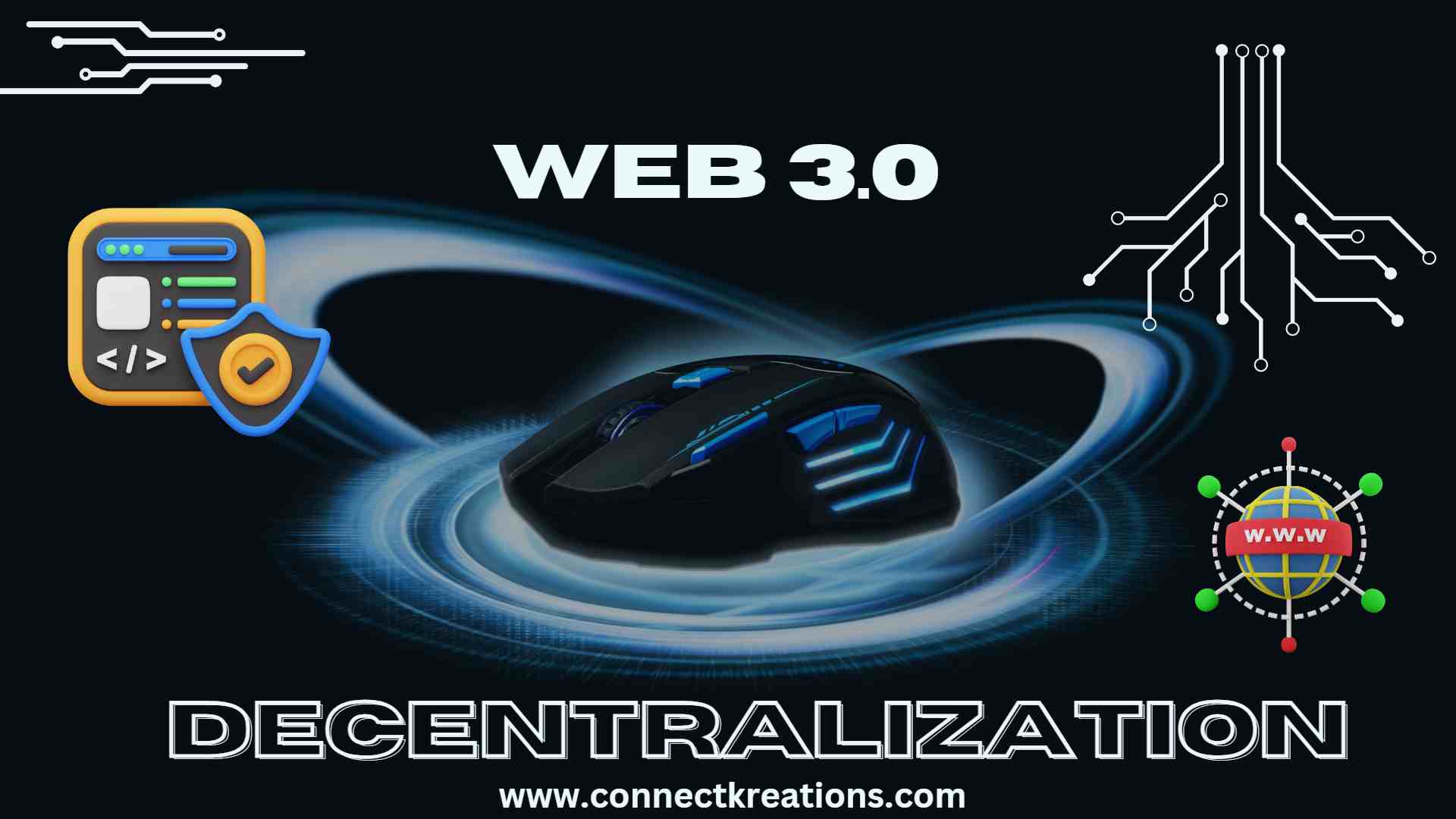

From Centralization to Decentralization: The Web 3.0 Revolution. Lets Start…
What is Web 3.0?
It is decentralized web which is an advancement of web 2.0 technology. This decentralization of data storage will help users to keep an eye on their personal data without being controlled from a centralized database. The important features of web 3.0 is decentralization of data and use of cryptocurrency instead of traditional banking services. Web 3.0 is based on human computer interaction making the web intelligent by learning. It would also use semantic meta data to collect the web information.


Previous versions
Web 1.0
Web 1.0 was introduced in early 1990s with static HTML pages. The pages were used to display the information but the web was not made available to write. In web 1.0 the web creators were less in number who were targeting a large number of audiences. JavaScript pages were not included in web 1.0 hence only static web pages were created.
Web 2.0
Web 2.0 was introduced in late 1990s which included interaction of web pages which gave the freedom to write the web pages which was missing in web 1.0. This interaction of web pages helped in growing of social networking sites, connecting people across the globe. The main focus was to expand the network of audiences and provide better experience to the users. The web pages were made more dynamic by introducing application programming interfaces (API) for better user experience.
How web 3.0 would be different from web 2.0
- Web 2.0 works on a centralized database system where the user’s personal data is stored. Since Web 3.0 would work with decentralized network system, the user will be able to control the storage of their personal data.
- The previous versions of web were provided with IPV4 addressing. Since Web 3.0 would require a greater number of IP addresses, IPV6 addressing will be used.
- Web 3.0 will be more intelligent than Web 2.0 as web 3.0 would use Artificial and Machine learning algorithms to reply to the user or show desired content to the user. This technology was lacking in web 2.0
- Since the network of web 3.0 is not connected to a centralised database, the speed of web 3.0 can be slower than centralised distribution. But could be eventually improved with speed to meet digital requirements.
Features
- Decentralized Network Operations
Unlike Web 1.0 and web 2.0, web 3.0 will have a decentralized system for its network operations and delivery. The previous versions used to rely on a central authority to store and deliver the data.
- Use of Blockchain technologies
Validation and authentication of data is done using blockchain technologies and services are managed according to it. It also helps in authenticated transactions using cryptocurrency without using the current financial facilities used by banks.
- Machine Learning Algorithms
Introduction of artificial intelligence and machine learning algorithms, will allow the web to study the patterns and make decisions on own without human interference.
- Semantic Teaching
Using Artificial Intelligence algorithms, web 3.0 is able to learn and teach the model to show personalised searches to the user by applying appropriate filters to the recommendations.
- Accessibility
Web 3.0 will be accessible throughout the globe and not accessible to only a specific region of the world. It has to be accessible with all the devices in use in all the parts of the world just like how social media sites are accessible across the world.
Advantages
- User’s Privacy Control
Since the system is based upon decentralized network, the users will be able to keep a track of their personal data in use.
- Better Visibility
With the earlier versions of web, the user data in use was hidden by a central administrator who would control the databases. With web 3.0 the users will get a better visibility of their data.
- Personalised search
Using Machine Learning and Artificial intelligence the web will be able to learn the things on its own and give personalised results to its users.
- Decentralized cryptocurrency
All the transactions will be decentralised and not controlled by a central authority. This means buying and selling of services will take place hassle free without permission from banks.
- Robustness
Since web 3.0 is decentralized, the network is safe even if there is an error or failure at any point of network. In web 1.0 and web 2.0 the network was controlled by a single authority. If any failure would occur at this point, the entire system would go down.
Disadvantages
- Security
Since the data would be decentralized, there is a high risk of user data getting leaked due to lack of security at the beginning. If the data is breached, it will be difficult to find from where exactly the data has been theft because there will be no central authority who could be answerable for the breach that has taken place.
- Complex Networks
Since the web 3.0 would include decentralized connection of web and users, the network requirements for this will be highly complex than centralized data connections.
- Expensive hardware requirements
The use of decentralized applications will introduce high level of security and the hardware components required for this setup will be expensive than compared to the software and hardware used by traditional bank services for transactions.






